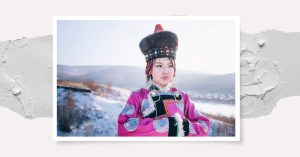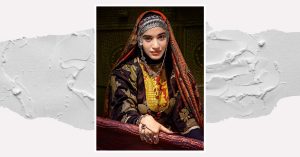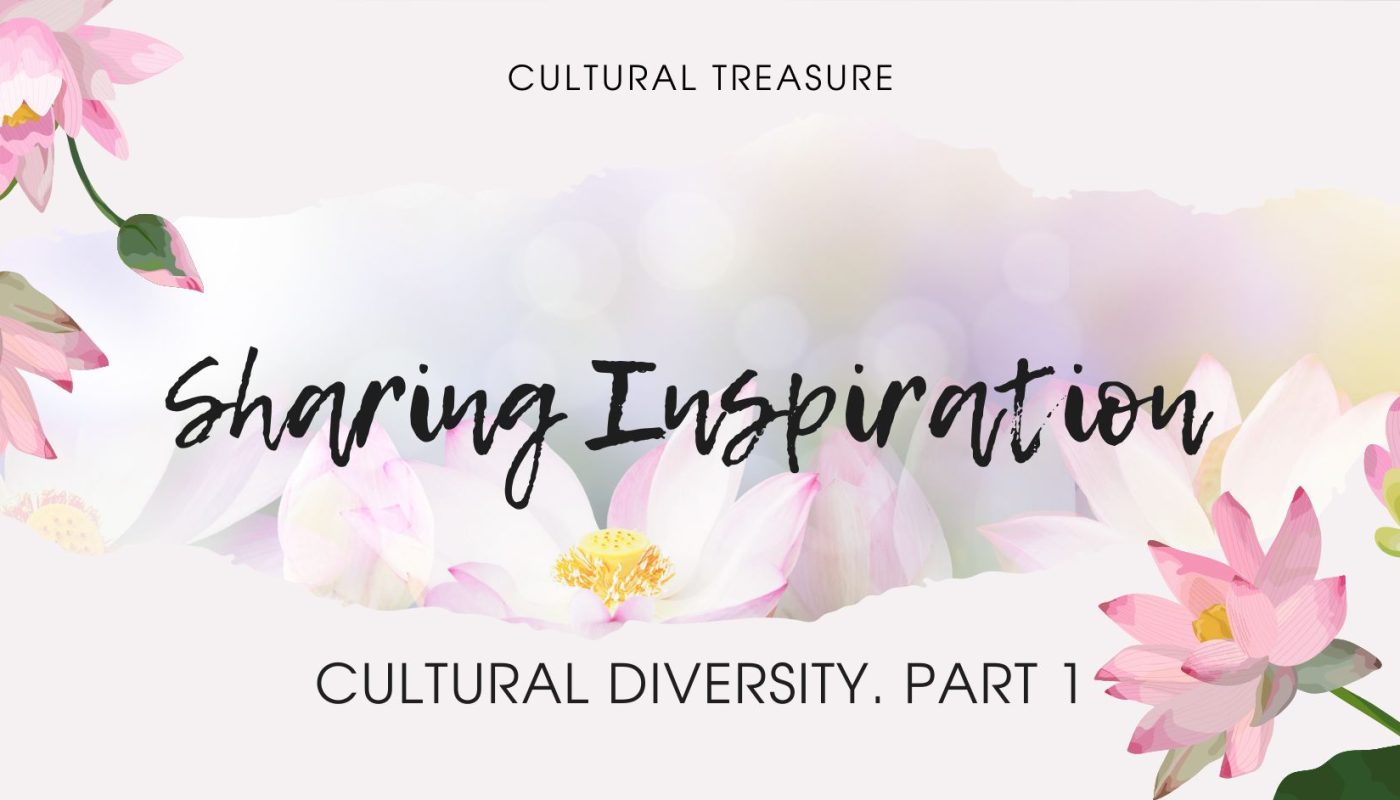Russia is a country with great cultural diversity. There are living over 190 nations including small and autochthonous nations. Their culture is magnificent and full of inspiring moments. Today I would like to introduce a few of them.
☆Buryats☆
The Buryats, a Mongolian people comprise one of the two largest indigenous groups in Siberia. The majority of the Buryat population lives in their titular homeland, the Republic of Buryatia, a federal subject of Russia near Lake Baikal.
The Republic of Buryatia is a federal subject of Russia (an autonomous republic) located in Siberia. Formerly part of the Siberian Federal District, it has been a part of the Russian Far East and indigenous Buryat Mongolians coexist with fellow non-Buryat Russians. Its capital is the city of Ulan-Ude, which means Red Gateway in Buryat Mongolian.
Traditionally, Buryats adhered to belief systems that were based on the deification of nature, belief in spirits, and the possibility of their magic influence on the surroundings. They were led by shamans, who systematized tribal beliefs and cults. From the second half of the 17th century, beliefs and cults in the shamanic form were displaced by Buddhism, which became widespread in ethnic Buryatia. By the end of the 19th century, the majority of Buryats were part of the Buddhist tradition. A synthesis of Buddhism and traditional beliefs that formed a system of ecological traditions has constituted a major attribute of Buryat culture.

☆Nenets☆
The Nenets also known as Samoyed, are a Samoyedic ethnic group native to northern Arctic Russia, Russian Far North. According to the latest census in 2010, most Nenets living in the Yamalo-Nenets Autonomous Okrug, Nenets Autonomous Okrug and Taymyrsky Dolgano-Nenetsky District stretching along the coastline of the Arctic Ocean near the Arctic Circle between Kola and Taymyr peninsulas. The Nenets people speak either the Tundra or Forest Nenets languages, which are mutually unintelligible. In the Russian Federation they have a status of indigenous small-numbered peoples.
The Samoyedic languages form a branch of the Uralic language family. According to one theory, they moved from farther south in Siberia to the northernmost part of what later became Russia sometime before the 12th century.
They ended up between the Kanin and Taymyr peninsulas, around the Ob and Yenisey rivers, with only a few of them settling into small communities like Kolva. Their main subsistence comes from hunting and reindeer herding. Using reindeer as a draft animal throughout the year enables them to cover great distances. Large-scale reindeer herding emerged in the 18th century. They bred the Samoyed dog to help herd their reindeer and pull their sledges, and European explorers later used these dogs for polar expeditions because they were well adapted to the arctic conditions.
Nenets have a shamanistic and animistic belief system that stresses respect for the land and its resources. During migrations, the Nenets placed sacred items like bearskins, religious figures, coins and more on a holy sleigh. The contents of this sacred sleigh are only unpacked during special occasions or for religious rituals (like sacrifices). However, only esteemed elders are allowed to unpack the sacred sleigh. They had a clan-based social structure.

☆Tatars☆
The Tatars is an umbrella term for different Turkic ethnic groups bearing the name “Tatar”. Historically, the term Tatars (or Tartars) was applied to anyone originating from the vast Northern and Central Asian landmass, then known as Tartary, a term which was also conflated with the Mongol Empire itself. More recently, however, the term has come to refer more narrowly to related ethnic groups who refer to themselves as Tatars or who speak languages that are commonly referred to as Tatar, namely Tatar by Volga Tatars (Tatars proper), Crimean Tatar by Crimean Tatars and Siberian Tatar by Siberian Tatars.
Most part of the Tatars in Russia are living in the Republic of Tatarstan.
The Republic of Tatarstan, or simply Tatarstan, is a republic of Russia located in Eastern Europe. It is a part of the Volga Federal District; and its capital and largest city is Kazan, one of the most important cultural centres of Russia.
The earliest known organized state within the boundaries of Tatarstan was Volga Bulgaria (c. 700–1238). The Volga Bulgars had an advanced mercantile state with trade contacts throughout Inner Eurasia, the Middle East, and the Baltic, which maintained its independence despite pressure by such nations as the Khazars, the Kievan Rus, and the Cuman-Kipchaks.
Volga Bulgaria finally fell to the armies of the Mongol prince Batu Khan in the late 1230s. The inhabitants, mixing with the Golden Horde’s Kipchaks, became known as the “Volga Tatars”. In the 1430s, the region again became independent as the base of the Khanate of Kazan, a capital having been established in Kazan.
The Khanate of Kazan was conquered by the troops of Russian Tsar Ivan the Terrible in the 1550s, with Kazan being taken in 1552.
People with various historical and cultural traditions live in the republic. The combination of at least three types of cultural interaction (Turkic, Russian-Slavic and Finno-Ugric) defines the uniqueness of this area and the originality of cultural and historical values.

☆Dagestanis☆
Dagestan, officially the Republic of Dagestan is a republic of Russia situated in the North Caucasus of Eastern Europe, along the Caspian Sea. It is located north of the Greater Caucasus and is a part of the North Caucasian Federal District. Makhachkala is the capital and largest city.
The name Dagestan refers only to the territory of Dagestan. The territory of Dagestan is shared by numerous ethnic groups, 14 of which are officially recognized, ethnic groups. The mountainous terrain of Dagestan, in the Caucasus range, has isolated many of its ethnic groups from outside influences.
Each ethnic group has its own particular folkloric tradition. Folk tales are passed orally from generation to generation, and some themes common to the peoples of Dagestan emerge. The tales are usually epic in nature, emphasizing heroism in battle, bravery, and loyalty to clan, village or family. In particular, the history of the Caucasian Wars has captured the imagination of many ethnic groups, and the themes of the struggles with Russians often enter the folkloric narrative. Only in the late 1990s did much interest develop in gathering these folk tales into written collections. Also, biographies of national historical heroes, such as the Imam Shamil, have been published.
In addition to epic bravery and historical detail, religious themes find expression in folkloric form. The Muslim peoples tell of events from the life of Muhammad and histories of local Muslim figures. Similarly, the Mountain Jews tell stories from their own religious tradition.

☆Tuvans☆
The Tuvans are a Turkic indigenous people of Siberia who live in Russia (Tuva Republic) and in Mongolia, and China. They speak Tuvan, a Siberian Turkic language.
Tuvans have historically been cattle-herding nomads, tending to herds of goats, sheep, camels, reindeer, cattle and yaks for the past thousands of years. They have traditionally lived in yurts covered by felt or chums, layered with birch bark or hide that they relocate seasonally as they move to newer pastures.
The traditional religion of Tuvans is a type of Tengriism or Turkic animistic shamanism. During the 18th century, the Tuvans converted to Tibetan Buddhism via contact with the Mongols. However, many shamanistic elements continued to be widely practised along with the new religion the Tuvans adopted.
A unique form of music exists in Tuva – commonly known as throat singing or as khoomei. There are various techniques of khoomei, some giving the effect of multiple tones by emphasizing overtones.

☆Bashkirs☆
The Bashkirs are a Kipchak Turkic ethnic group, indigenous to Russia. They are concentrated in Bashkortostan, a republic of the Russian Federation and in the broader historical region of Badzhgard, which spans both sides of the Ural Mountains, where Eastern Europe meets North Asia.
Most Bashkirs speak the Bashkir language, an endangered language closely related to the Tatar and Kazakh languages, which belong to the Kipchak branch of the Turkic languages; they share historical and cultural affinities with the broader Turkic peoples. Bashkirs are mainly Sunni Muslims of the Hanafi madhhab faith, following the Jadid doctrine. Previously nomadic and fiercely independent, the Bashkirs gradually came under Russian rule beginning in the 16th century; they have since played a major role throughout the history of Russia, culminating in their autonomous status within the Russian Empire, Soviet Union and post-Soviet Russia.
The Bashkirs traditionally practised agriculture, cattle-rearing and bee-keeping. The half-nomadic Bashkirs travelled through either the mountains or the steppes, herding cattle. Wild-hive beekeeping is another attested tradition, which is practised in the same Burzyansky District near the Kapova Cave.

How did you like the post? SURVEY
________________________________________________________________________________
More inspiration you can find on my Instagram @atlas_of_inspiration
________________________________________________________________________________
All posts:
Sharing Inspiration. Introduction
Sharing Inspiration. The World of Fabergé. Part 1
Sharing Inspiration. The World of Fabergé. Part 2
Sharing Inspiration. The World of Fabergé. Part 3
Sharing Inspiration. The World of Fabergé. Part 4
Sharing Inspiration. The World of Fabergé. Part 5
Sharing Inspiration. The World of Fabergé. Part 6
Sharing Inspiration. Russian Ballet. Part 1
Sharing Inspiration. Russian Ballet. Part 2
Sharing Inspiration. Russian Ballet. Part 3
Sharing Inspiration. Russian Ballet. Part 4
Sharing Inspiration. Russian Ballet. Part 5
Sharing Inspiration. Cultural Diversity. Part 2
Sharing Inspiration. Cultural Diversity. Part 3
Sharing Inspiration. Cultural Diversity. Part 4
Sharing Inspiration. Cultural Diversity. Part 5
________________________________________________________________________________
Sources: www.encyclopedia.com pinterest.ru wikipedia.com zen.yandex.ru



